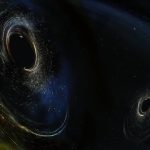Key Takeaways:
- Lichen from Antarctica survived 18 months on the exterior of the ISS.
- Though damaged, over 60% of the lichen cells survived simulated Martian conditions.
- Space is harsh with extreme temperatures, radiation, and micrometeoroids.
- Lichen’s resilience has been confirmed in multiple space experiments.
- This finding suggests potential for life, like lichen, to exist on Mars.
It is at best rhetorical to wonder if it would be possible for you to live outside of the International Space Station (ISS), but could any living thing on Earth manage it?
One unassuming toughie did, and provided at least rough proof of concept that life could exist on Mars.
According to Futurism, lichen from the McMurdo Dry Valleys in Antarctica survived 18 months on a platform attached to the exterior of the ISS Columbus module. Many of them survived even though they emerged in worse condition than temperate lichens tested separately in “Mars-like conditions.”
Damaged but not destroyed
The authors of the study focused on the species’ performance in the Martian simulation.
As a co-researcher on the project and representative of Spain’s National Institute of Aerospace Technology (INTA), Rosa de la Torre Noetzel said, “The most relevant outcome was that more than 60% of the cells…remained intact after ‘exposure to Mars.'”
Survival in outer space itself was lower. Throughout the course of the experiment, only about 35% of the lichen’s cells kept their membranes.

Still, this is compelling evidence that lichen is far more strong than anything living by several orders of magnitude.
Space is, in a word, uninhabitable for life forms based on carbon. Space is, in no particular order,:
- Several hundred degrees below zero. or, depending on where you are, thousands of degrees above.
- Radiative. According to NASA, radiation exposure for astronauts on a six-month mission can reach 2,000 millisieverts. In contrast, approximately 120 were given to the workers in charge of the cleanup after Chernobyl.
- High-velocity ammo in a shooting gallery. A .50 caliber bullet travels about .86 kilometers per second. Meteorites can cover 40km in a second.
Not a coincidence
Nonetheless, lichen’s resistance to these circumstances has been demonstrated by numerous experiments.
Lichens were deposited on a rocket in 2005 and subsequently attached to an ESA module outside a Russian satellite by researchers. After 16 days of being away from them, they returned home.
The study found that following the flight, “all exposed lichens, regardless of the optical filters used, showed nearly the same photosynthetic activity.” “These findings indicate that [most lichen cells] can survive in space after full exposure to massive UV and cosmic radiation, conditions proven to be lethal to bacteria and other microorganisms.”


